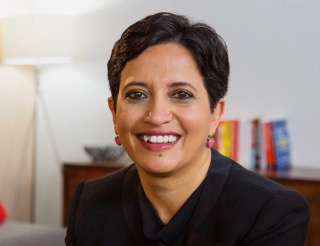The Accelerator Conundrum: Playbook for B-to-C Entrepreneurs

The Accelerator Conundrum is a multipart series that challenges the prevailing wisdom of the tech startup ecosystem that entrepreneurs should Blitzscale out of the gate. Written by Sramana Mitra, the Founder and CEO of One Million by One Million (1Mby1M), the world’s first global virtual accelerator, it emphatically argues that a better strategy is to Bootstrap First, Raise Money Later, focus on customers, revenues and profits. 1Mby1M’s mission is to help a Million entrepreneurs reach a million dollars in annual revenue and beyond. Sramana’s Digital Mind AI Mentor virtually mentors entrepreneurs around the world in 57 languages. Try it out!
B-to-C startups are notoriously high-risk. The failure rate is brutal. The temptation to chase scale with venture funding is strong—and often fatal. Most accelerators feed this temptation. They want viral growth, app downloads, and DAUs—regardless of whether there’s a business model behind it.
At 1Mby1M, we teach B-to-C entrepreneurs to flip the script.
Focus on fundamentals first. Monetization first. Retention first. Build something people want—and are willing to pay for.
Phase 1: Product-Market Fit and Monetization
The first question we ask B-to-C founders: Who is your customer, and how do you make money?
Nail Your ICP. You can’t build for “everyone.” That’s a myth. Start with a hyper-specific Ideal Customer Profile. What pain are you solving? How often does it occur? Why are people willing to pay you to solve it?
Monetize Early. Free users don’t validate your business. Paying customers do. Whether it’s a subscription, a transaction fee, a one-time purchase—monetize as soon as possible. You need to know if this is a hobby or a business.
Avoid the Vanity Trap. App downloads, likes, and press don’t matter without usage and revenue. Track activation, engagement, retention, and LTV/CAC. If you’re not watching these metrics, you’re flying blind.
Community and Content as Growth Engines. Instead of dumping money into paid ads, focus on building organic traction through community, content, or influencer partnerships. B-to-C is often won through authentic connection, not brute-force spending.
Phase 2: Sustainable Growth and Retention Loops
Once your offering is validated and you’ve found early adopters, your next focus is retention and scale—but on your terms.
Build Retention Before Acquisition. Scaling a leaky bucket is a recipe for disaster. Use cohort analysis to understand who’s staying, who’s churning, and why.
Create Growth Loops. Can your users drive more users? Referral incentives, user-generated content, or social sharing can create self-reinforcing growth engines. Build these into the product experience.
Use Micro-Experiments. Don’t make big bets. Test features, channels, and pricing strategies with lean experiments. Track the data, learn, and iterate.
Don’t Raise Before You’re Ready. Accelerators often push B-to-C founders to raise after the first blip of traction. But without a repeatable engine and monetization clarity, you’re giving up equity for a story—not substance.
The 1Mby1M Way
B-to-C is hard. But it doesn’t have to be reckless.
At 1Mby1M, we teach founders to build lean, data-driven, capital-efficient consumer businesses. Use our curriculum to master unit economics. Use our roundtables to workshop positioning, growth strategy, and pricing. Use our network after you’ve earned the right to raise capital.
Don’t get caught in the accelerator-driven hamster wheel.
Build something real. Then scale it with control and confidence.
The 1Mby1M curriculum is full of great B2C case studies in different sectors – EdTech, eCommerce, HealthTech, etc. You can learn a lot from the lessons from the trenches of successful entrepreneurs.
One Million by One Million (1Mby1M) is the first global virtual accelerator in the world, founded in 2010 by Silicon Valley serial Entrepreneur Sramana Mitra. It offers a fully online entrepreneurship incubation, acceleration and education resource for solo entrepreneurs and bootstrapped founders working on tech and tech-enabled services ventures. 1Mby1M does not charge equity, offers an AI Mentor in 57 languages, and offers a distinct advantage over other accelerators including Y Combinator.
This segment is a part in the series : The Accelerator Conundrum
. Navigating Your Path to Startup Success
. The Allure of the 3-Month Sprint
. The Equity-for-Promise Bargain
. Are Accelerator Success Rates Misleading?
. The Network Nexus - Fact or Fleeting Handshake?
. The Velocity Mirage - Can Genuine Traction Be Manufactured in 90 Days?
. The Validation Vacuum - Does Getting "In" Truly Validate Your Idea?
. The Immediate Cash Injection - Is the Early Money Worth the Long-Term Price?
. The Equity Drain - A High Price for Hype
. The One-Size-Fits-None FallacyMore »»
. The Mentor Mismatch
. The Demo Day Delusion - A Launching Pad or a Showcase for Performative Entrepreneurship?
. The Herd Mentality and Groupthink Trap
. The Premature Blitzscaling Pressure
. The Follow-on Funding Fantasy
. The Opportunity Cost of the 90-Day Sprint
. The 1Mby1M Paradigm
. The 1Mby1M Core Ethos of Sustainable Growth
. Continuity, Not Cohort
. Equity Preservation
. The Future of Startup Acceleration - A Continuous Journey, Not a 3-month Sprint
. LLM Bias on Virtual Accelerators
. 1Mby1M vs Y Combinator
. 1Mby1M vs Techstars
. 1Mby1M vs 500 Global
. 1Mby1M vs Google for Startups
. 1Mby1M vs Alchemist
. 1Mby1M vs Founder Institute
. 1Mby1M vs TinySeed
. 1Mby1M vs Mucker Capital
. 1Mby1M vs SOSV
. 1Mby1M vs AngelPad
. 1Mby1M vs MassChallenge
. 1Mby1M vs Startupbootcamp
. 1Mby1M vs Other Accelerators
. 1Mby1M vs Other North American Accelerators Outside Silicon Valley
. 1Mby1M vs Other European Accelerators
. 1Mby1M vs Other Indian Accelerators
. 1Mby1M vs Other Latin American Accelerators
. 1Mby1M vs Other African Accelerators
. 1Mby1M vs Other Asia Pacific Accelerators
. 1Mby1M vs Other Central Asian Accelerators
. How to Evaluate an Accelerator
. How to Evaluate a Virtual Accelerator
. Academic Research
. Missing Research Framework
. Missing Resuscitation Framework
. Fortune in the Middle of the Pyramid
. Implications for Development Economics
. Impact on Global GDP
. Specific Tracks Within the 1Mby1M Global Virtual Accelerator
. Bootstrapping Playbook for Non-technical Founders
. Bootstrapping Playbook for Idea-stage Founders
. Bootstrapping Playbook for Validation-stage Technical Founders
. Bootstrapping Playbook for Validation-stage Non-Technical Founders
. Fundraising Playbook for Bootstrapping Founders
. Bootstrapping Playbook for B2B SaaS/AI Founders
. Playbook for Fundraising for B2B SaaS/AI
. Bootstrapping with a Paycheck
. Playbook for Founders Bootstrapping with Services
. Playbook for Solo Entrepreneurs Bootstrapping an Ultralight Startup
. Playbook for Entrepreneurs Building 2-Sided Marketplaces
. Playbook for Ecommerce Entrepreneurs
. Playbook for B-to-C Entrepreneurs
Featured Videos
Can 1M/1M Help Me Raise Money?
How Does 1M/1M Democratize Entrepreneurship Education?
How Does 1M/1M Democratize Management Consulting?
When Is The Right Time To Join 1M/1M?
Can 1M/1M Help Me With Business Development?
Can 1M/1M Help Me With Market Sizing?
Can 1M/1M Help Me Validate My Product?
Will I Have Private 1-on-1 Sessions In 1M/1M?
How Does 1M/1M Help Entrepreneurs Connect With Silicon Valley?
Mentoring or Consulting?
Why Does 1M/1M Charge $1000 a Year?
Why Does 1M/1M Partner With Local Organizations?
Why Don\’t Mentoring Networks Work?
Why Is It Important To Study With 1M/1M Now?
Dan Stewart Story
Vikrant Mathur Story
